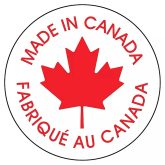July 1 marked five years since the Canadian Free Trade Agreement came into force with the goal to “establish an open, efficient, and stable domestic market” in Canada, according to its website.
Has there been any progress?
According to the CFTA’s Regulatory Reconciliation and Cooperation Table (RCT), which was created to address regulatory barriers to trade between provinces and territories, the answer is a clear “yes.”
In the 11 “reconciliation agreements” and 15 “work plan items” addressed over the past five years, the RCT has helped simplify processes, align regulations and set consistent standards across provincial borders. These are real achievements that deserve recognition.
Read Also

Kochia has become a significant problem for Prairie farmers
As you travel through southern Saskatchewan and Alberta, particularly in areas challenged by dry growing conditions, the magnitude of the kochia problem is easy to see.
There are big benefits to be had by reconciling differing regulatory measures that act as barriers to trade, investment, or labour mobility within Canada.
Consider construction codes. Codes that differ from province to province increase compliance costs for businesses and these are passed on to consumers. The National Research Council has estimated the economic impact of eliminating duplication, limiting variation and increasing harmonization of construction codes at $750 million to $1 billion annually.
When we look at progress in terms of the CFTA more broadly, however, only some provinces have gone full steam ahead in search of interprovincial free trade. Others have done far less.
It’s not just the RCT that should be addressing barriers; provinces can also make unilateral moves to liberalize interprovincial trade.
For instance, in late 2021, Alberta passed a bill to streamline and standardize processes for workers with credentials from elsewhere in Canada. This will reduce current barriers to labour mobility and help attract skilled workers to the province. Though the main benefit of such a policy is to the province that institutes it, it remains to be seen whether other provinces will follow suit.
One disappointing fact about the CFTA is that more than 70 percent of the agreement consists of a list of exceptions. While the intent was to enhance economic flows within Canada, more must be done to eliminate many of these exceptions.
As documented in a report two colleagues from the Montreal Economic Institute and I published last year, between 2017 and 2021 only Alberta, Manitoba, and Ontario made any real progress in reducing their barriers to the free movement of persons, goods, services, and investments within Canada.
Others, like British Columbia and the territories, have actually increased their barriers.
In other provinces, notably Quebec, little has changed. During the life of the CFTA, Quebec has not removed any protectionist policy written into the agreement through its negative list approach of explicitly excluding sectors from reform.
In 2017, Quebec counted 35 broad exceptions to the CFTA, a number that remains unchanged five years later. Alberta, on the other hand, has reduced its originally exempted barriers from 27 in 2017 to only six in 2021 — a 78 percent decrease.
Our study indicates that if Quebec were to remove all its interprovincial trade barriers currently exempt under CFTA, per capita gross domestic product in the province would increase by 4.6 percent.
Freeing up interprovincial trade is a simple, low-cost way to stimulate the economy, raise our productivity and improve our standard of living.
It’s a no-brainer: clearing away the barriers would spur economic growth and increase Canadians’ prosperity by the equivalent of an estimated 3.8 percent increase in GDP per capita, according to the International Monetary Fund.
Some progress has been made, but we need to refocus on the original intent of the agreement from five years ago and ask ourselves: what more can we do, and how long must we wait to do it?
Krystle Wittevrongel is a public policy analyst at the Montreal Economic Institute.

















